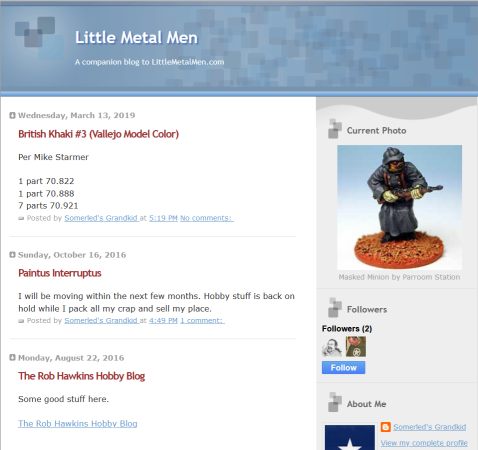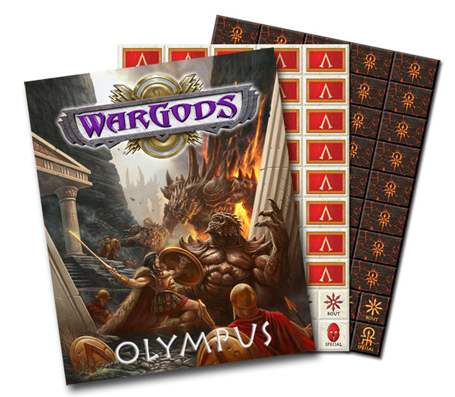I'm happy to able to present here the first installment of a series of three articles detailing painting of Thunderbolt Mountain's new Wood Elf Champion. The figure is packaged as a set, including a foot and mounted version of the same character. This first article will deal with the figure on foot; next week I'll tackle the mounted fig; and the third will describe making a scenic (wooded, what do you know ![]() ) display base.
) display base.
This first article focuses on achieving realistic, naturalistic colors to match the sculpts, and hopes to illuminate some of the painting techniques I've used on the figures - most notably, wet-blending and glazing. Hopefully, there's something here for painters at all levels, but especially those who seek a believable finish at the showcase level and beyond.
The Figures
Alright, it's Tom Meier, which means it's time to pull out the superlatives. For those who haven't had a chance to view one of his recent figures up close, you really owe it to yourself. All hyperbole aside, they're kind of incredible. The adjective that best suits them might be "peerless." They are the first-and-only figures to pass my brush that I can call "true 28mm scale." The craftsmanship is all-around brilliant. The details are incredibly finely wrought. The horse is noble, graceful and lifelike, unlike any other I've seen. The style is a Tolkien purist's dream come true.
Yeah, so the figures are great.

(Note that after this picture was taken, I decided to switch the heads on the mounted figure, in order to show more of the options in the set.)
The Approach
In my last Workbench article (detailing the Zombie Resistance Family Project), I talked a little about my tools and materials, and my approach to painting. I still use the same approach today, so I'm just going to copy most of this part from the previous article.
Tools and Supplies
I consider the following to be essential. The absence of any one of these just leads to frustration for me.
- Wet palette
- Mine is a Masterson's Sta-wet Handy Palette.
- Future No-Wax Floor Polish
- If you haven't joined us already, where have you been?
- Retarder
- Keeps your paints wet long enough to blend.
- Lint-free rag
- I was using paper towels for a long time, blind to the slowly mounting frustration the lint was causing me. Gone now!
- Good Brushes
- I can only achieve the smooth blends I use in this tutorial with good, natural sable brushes. For these figures I used Winsor & Newton Series 7 brushes, #2, Miniatures 1, and Miniatures 00.
And the following are really helpful:
- Flow enhancer
- I have a bottle of this from the art shop, but dish soap and water works as well.
- OptiVisor
- Not only is it useful for seeing what you're doing (and what you're doing wrong), it's an iconic fashion accessory that no self-respecting painter should be without.
- A good lamp
- Recently, my fluorescent desk lamp gave out. It was over 50 years old, made of steel. I'm still hoping to fix it one day, but getting a new ballast for it has proven a very difficult task. In the meantime, I've discovered the wonders of the spiral-shaped compact fluorescent bulbs that fit in standard fixtures. They are amazing! Clean, white, daylight. I picked up a 3-pack of 90-watt-equivalent bulbs for $12 USD.
Techniques
Wet blending
For this project, I decided to rely more on wet-blending. Wherever I use the term "blend" in the article, this is what I mean. Many fear this technique, and leave it for the experts. The truth is it does take brush control, but it actually saves a lot of time and is less finicky that layering. The most important thing about blending is preparation. With the right tools blending becomes second nature.
A wet palette and retarder are necessary. So is a high quality, soft brush (not synthetic). I almost always blend with a Winsor and Newton (W&N) Series 7 #2 brush (from the standard Series 7 line, not the miniatures line). First, I line up every color in the attempted blend, from dark to light, on my palette in a neat little line. Next, I take the darkest of the colors and paint the entire surface I'm working on. I let it dry. The reason for this is that if you don't have a dry coat beneath, mixing a lighter color on top can sometimes push aside the dark paint entirely and leave the primer showing through, which gets difficult.
Then I mix a lot of retarder in the darker shade, and paint a second dark coat on top of the first coat. I only paint a area of such size as I can blend before the whole thing dries. With the retarder mixed in the dark paint, it will be a few minutes. Then I take the next lightest color, paint some stripes where I want to blend "up" (lighter). Quickly, I then wipe the paint from my brush (use cloth!) and then begin to blend. Repeat as needed until dry. With a little practice, you can add a little retarder and keep the blend going up to top. However, you can stop the blend at any time and let it dry. Then you can either pick up the blend again where you left off, or use layering to complete the top highlights.
A Note about Photographing Blending
Much like the elusive Sasquatch, pictures of the blending process are hard to come by. In cases where I used blending, you get a before and an after pic, but getting pics of the stages is impossible, since there aren't any stages. So I've tried to make my written descriptions as accurate as I can.
Layering
Layering means you're building successively lighter thin semi-transparent layers of paint, one on top of each other. I mix Future No-Wax Floor Polish with my paint as a medium to make it transparent. Close up, the result looks like a contour map, but viewed normally, the illusion of a smooth blend can be created. In order for layering to be convincing, your layers have to be fairly close in tone.
Glazes
Glazes are layers that are entirely transparent, or as close as you can get. The aim is to tint a given area. Glazes are usually made with ink and a medium like Future, but they can be made with paint as well.










